Results 1 to 10 of 12
Thread: Belgian Stone
-
11-16-2015, 11:24 PM #1
 Belgian Stone
Belgian Stone
I seen one of these stones a belgian razor hone on e-bay with paper stuck to the blue side. Kind of like the German Escher. Is the blue side used to hone with or sharpen ? I am wondering why they would stick paper on that part of the hone.
-
11-16-2015, 11:44 PM #2

Could you post a link to the stone you're talking about? I tried to find it and couldn't.
-
11-16-2015, 11:44 PM #3

Years ago the blue side was not considered hone worthy. Back maybe 40 years ago they began using slate backing instead of the blue on glued coticules. Old Rock, and Deep Rock coticules whether glued or natural will have the label opposite the yellow side.
Some blue is good for honing, some not so good. Some of it is used for paving stone, stone fencing and the like. Some guys like the blue, I've played around with it, but prefer the yellow on my natural yellow/blue coticules.Be careful how you treat people on your way up, you may meet them again on your way back down.
-
The Following User Says Thank You to JimmyHAD For This Useful Post:
AlienEdge (11-17-2015)
-
11-16-2015, 11:56 PM #4
-
11-17-2015, 12:01 AM #5

Vintage Belgian Straight Razor Hone Sharpening Stone with Box | eBay
It was a lot like this but different paper, and it cost a lot too if that helps
-
11-17-2015, 12:02 AM #6

Is the blue and yellow quarried at the same time or spot ?
-
11-17-2015, 01:41 AM #7

If the stone is a 'natural', that means that the yellow was harvested close enough to the vein of blue that they are not separated. So the blue and yellow are naturally in one piece. Probably more common is the yellow harvested and in order to reinforce the delicate coticule a piece, formerly blue, later slate, is glued to the yellow. Below is an example of some natural (not glued) stones ;
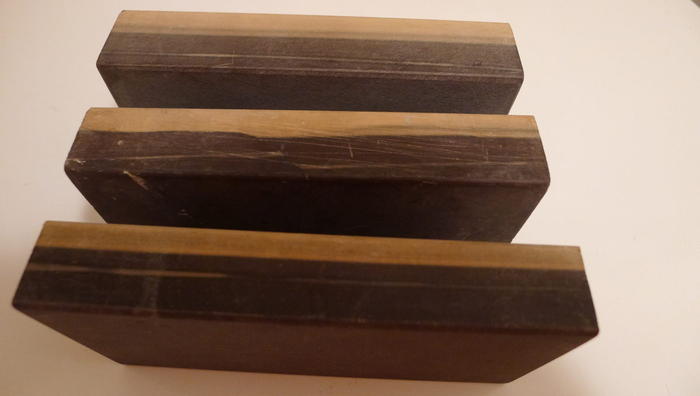 Be careful how you treat people on your way up, you may meet them again on your way back down.
Be careful how you treat people on your way up, you may meet them again on your way back down.
-
11-17-2015, 02:01 AM #8

That is just the manufacturers label. The Belgian Blue Whetstone wasn't cherished back in the day for razor honing, only the yellow coticule was. So I'm sure they didn't have a problem putting there label there as it wasn't going to be used for honing anyways.
If you're really interested in Belgian Hones
Coticule.be, google it and read. You'll learn tons and gain an understanding of the stone. It will answer all if not 90% of your questions.
-
The Following User Says Thank You to s0litarys0ldier For This Useful Post:
AlienEdge (11-17-2015)
-
11-17-2015, 02:29 AM #9

I have a ruby red hone and on a paper or on the box it talks about these belgians and it says they are really good stones. I seen that hone dressed up like a escher and thought it might devalue it to take that paper off the blue side to hone on it . It looks like they glued to hones together. I haven't ever held any of those foreign stones, but I was curious about them. Thanks for your help
-
11-17-2015, 02:40 AM #10

The only coticules I can remember seeing with labels glued to the blue were the 'Old Rock', and the 'Deep Rock.' There may have been others that did that but I don't recall. IME the label on an Old Rock is easily soaked off. Let it dry and put it aside.
The Deep Rock is a different kettle of fish. I've only had a couple (since sold) but those had labels that were stuck on to stay. Honestly, IME it isn't worth removing the label, unless it falls off easily, to hone on the blue side. Just get one without a label, or a separate blue. Below is a natural Old Rock, a Deep Rock, and a glued Salem. The Salem didn't have a label on it, just to illustrate a glued stone.
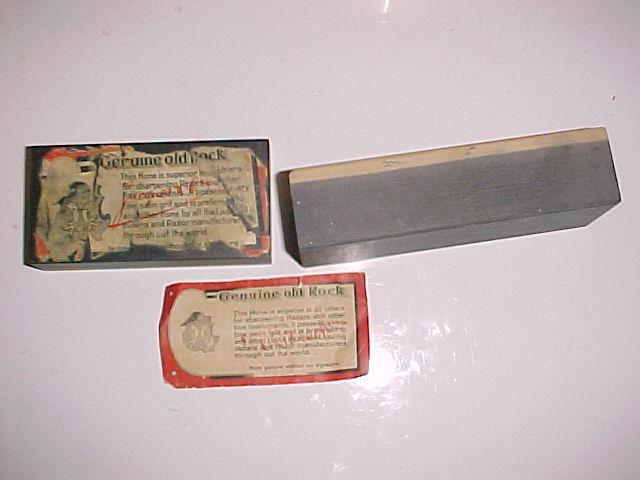
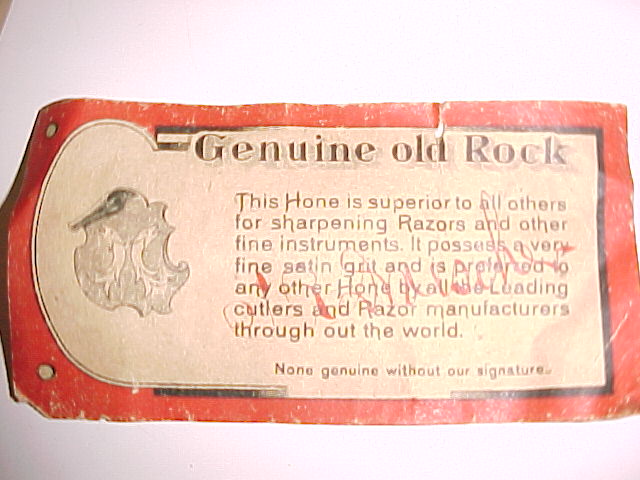
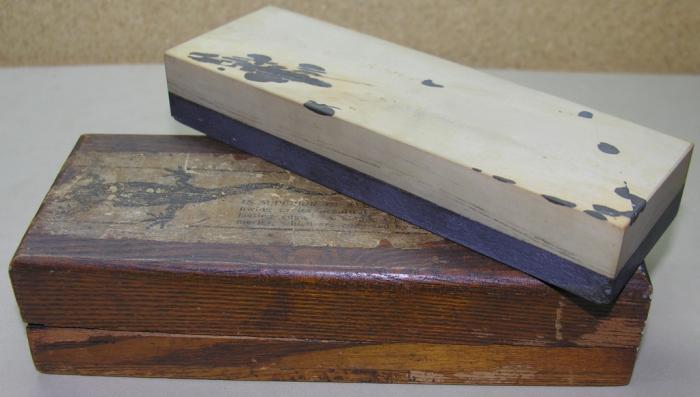
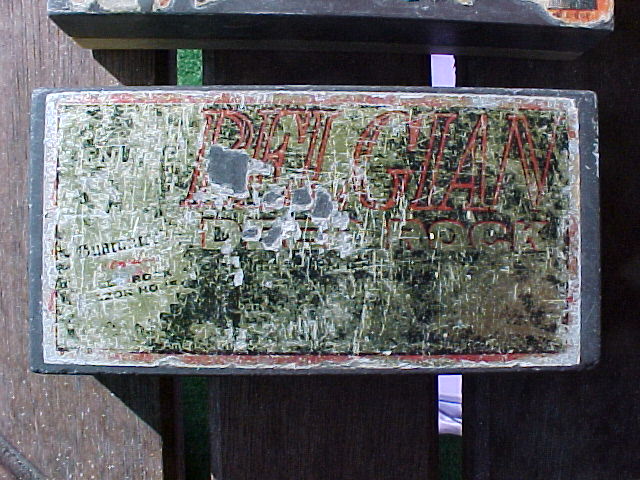 Be careful how you treat people on your way up, you may meet them again on your way back down.
Be careful how you treat people on your way up, you may meet them again on your way back down.


 6Likes
6Likes LinkBack URL
LinkBack URL About LinkBacks
About LinkBacks






 Reply With Quote
Reply With Quote



